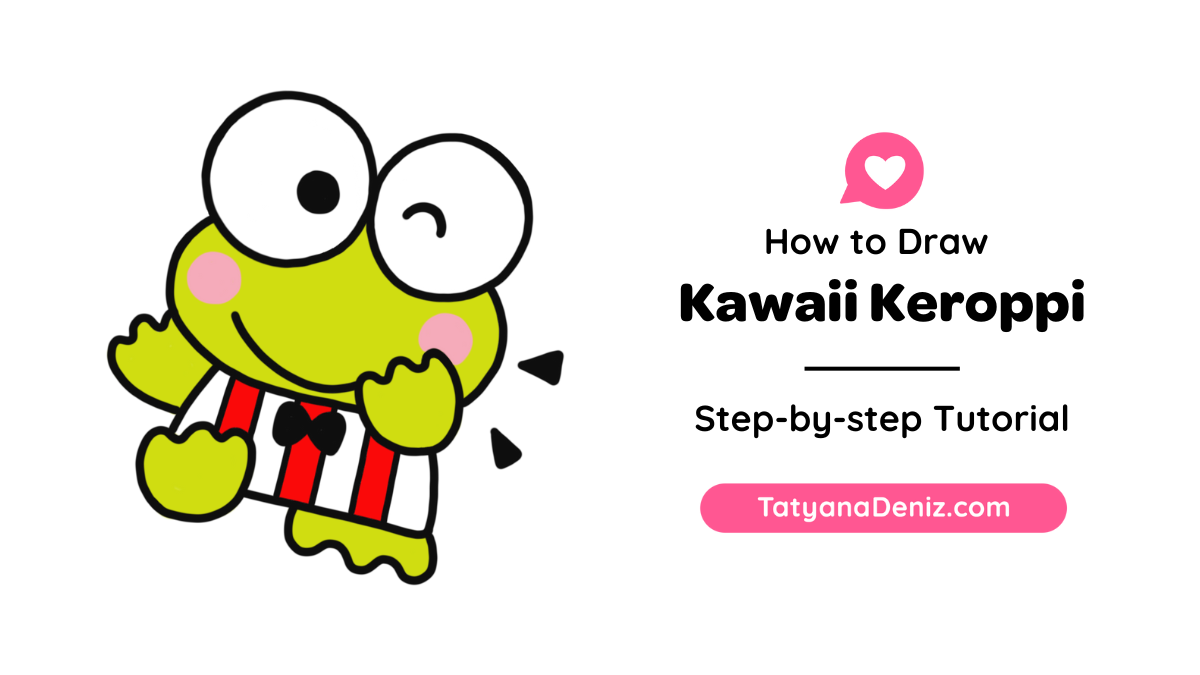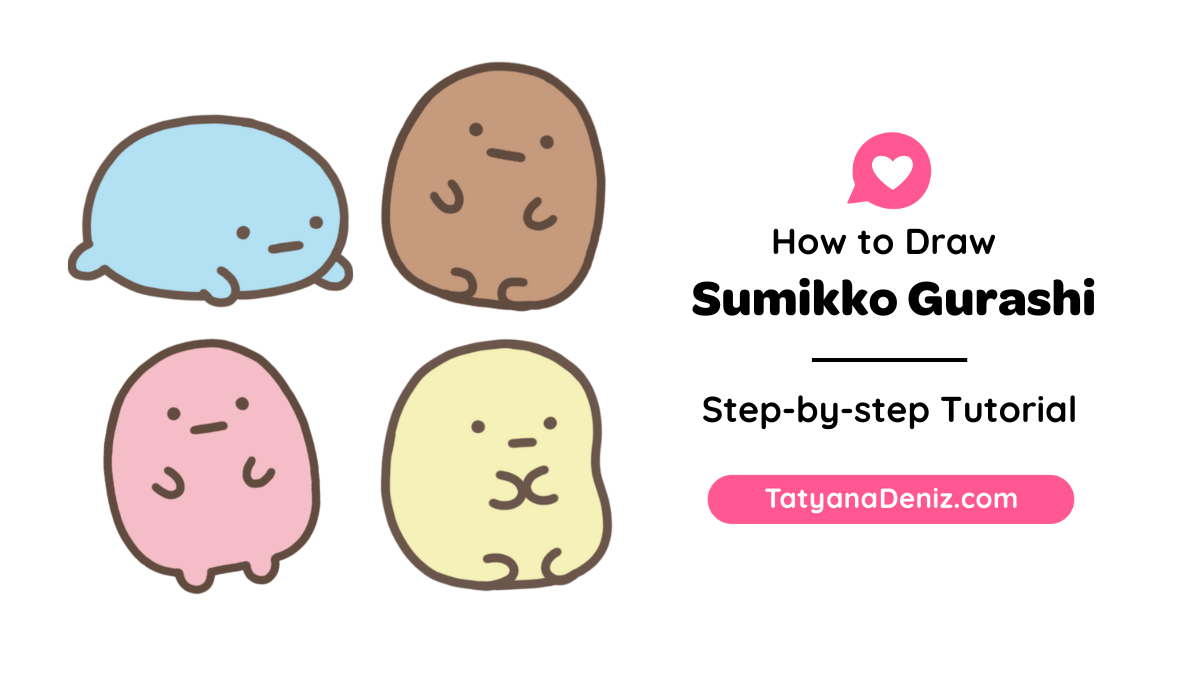
After all, we are drawing real living kawaii, not machines. And real living heads and bodies are never perfectly round.
What we don’t want is aiming for a circle and producing a potato :).
In this post I will share how I practiced drawing circles for a week and my drawing results (like this freehand mandala design).
This is Week 3 of my personal drawing challenge to learn how to draw kawaii in 6 months.
How I Practiced Drawing Circles
I used to think that I suck at drawing, because my circles were never round… But after some practice (just a couple of days), they got MUCH better!
First, I practiced lots of circles on graph paper. This develops the eye-hand necessary for drawing circles.
Here is a sample page:

Example of drawing lots of circles on graph paper
When I felt confident with circles on graph paper, I drew random circles on printer paper (folded in half) and colored around them. This created a fun doodling page! You can wait for a bus and practice your circles at the same time :).

Doodles with circles
Another fun way to practice circles is to create designs with them and use as coloring pages. The finished coloring can be a binder cover or a cute message card.
Below is an example of a design I did. The circles are not all perfect, ha. But it doesn’t matter!

Coloring page with circle designs
How I Practiced Drawing Believable Spheres
By the end of the week I was curious about how to make my circles look three-dimensional. Like a real head! I tried to draw curved lines over the surface, but they still didn’t look round :(.
What to do???… Use a reference!
I got a $1 styrofoam ball from a dollar-shop and drew the axis on it with a permanent marker.

How to draw believable spheres by using a reference ball
Then I used the ball to draw lots of circles at different angles.

Spheres exercise, perfect for learning to draw faces
This understanding of how to draw spheres will be VERY useful, when I get to drawing heads and faces. The axis show where the eyes and nose and mouth will go. No matter what the angle, I will be able to place the face correctly!
Techniques for Drawing Perfect Circles
When if comes to drawing circles, the biggest factor is “muscle memory”. Your hand needs to know how a circle feels and how your arm needs to move. So in one word: practice.
Second most important thing is being able to complete the circle in one motion. To achieve this, you need to be able to see the space where the circle will go. Move your paper around until you are confident that the circle will not be obstructed as you draw it, and that you have enough space for the hand to move.
Below are a few more tips:
- Start by drawing lots and lots of circles on graph paper to get used to the motion
- Experiment with drawing circles in different directions. Sometimes, go left-to-right, then change right-to-left. You might find that one of the directions works better for you.
- If you become frustrated and unhappy with your drawing results, lower the challenge. Draw something simpler until you become satisfied again. When I first drew the circle mandala (at the beginning of this post), I made if very complicated, and it came out to be a mess! I was upset. Then I simplified it to only 3 layers, and I was enjoying myself again. Phew!
- Use smaller drawing paper (A5 works well) to make sure that you can easily move the page around
- If you do need to produce a perfect circle (say, you are drawing a robot), just use a compass or a round object to outline. That’s why we have them!
Materials I Used
Here is a complete list of materials I used this week.
- Micron pen, black, size 04
- Artline pen, black, size 04. I’ve always used Micron pens before and I thought they are the best. But I decided to try Artline, just on a whim, and I really like it! It draws smoother than Micron, and it feels more juicy. I still use Microns, when I need a precise line. But I will now add Artline to my tool box for more expressive lines.
- Tombow Dual Brush pen, black
- Styrofoam craft ball to use as reference
- Staedtler permanent marker, black, to draw on the styrofoam ball
- Graph paper
- Printer paper (so you can draw with no pressure, if you mess up you can just throw it out!). Fold the paper in half to make it smaller and easier to move around the table. This is very important for drawing circles!
Drawing Time Diary
Monday, Nov 28: two sessions, 45 min, 1 hr
Tuesday, Nov 29: two sessions, 20 min, 40 min
Wednesday, Nov 30: two sessions, 45 min, 1hr
Thursday, Dec 1: one session, 35 min
Friday, Dec 2: one session, 1.5 hr
Saturday, Dec 3: no drawing 🙁
Sunday, Dec 4: one session, 30 min
Total drawing time: 7 hr 5 min






Thank you for these useful tips. My circles are really bad and I struggle with them a lot.I will start practice from today 🙂
So glad these tips are helpful! Thank you for the comment 🙂
Really usefull advices! I was just studying loomis and getting pissed becouse even tho i practice a lot, i still suffering a little with getting these circles right. Your tips will be really useful!
Haha, yeah I hear ya! Those circles are tricky. 🙂 Glad you found useful tips here!
This is super helpful. I really love the Styrofoam idea! This blog post reminded me of the “Ellipses in Tables” part of Drawabox. Your website is so cute too (I’m a developer and super impressed by the beautiful simplicity of it).
Oh thank you! Glad this post was helpful. I’ve heard of Drawbox too, although I haven’t used it myself. 🙂 And hey, I was a web developer in my “past” pre-art life, so polishing my website is still a bit of a hobby, haha. Did you grab your mini-course?
anychance you would be willing to take a bunch of pictures of the styrofoam ball? I’m not sure I’m going to be able to get a ball for awhile.
Hi Tokies, thanks for the idea! I’ll consider adding a few photos of my styrofoam ball. For now, there is a really good (free) book by Andrew Loomis that goes into this in detail. If you do a Google Image search for “andrew loomis sphere” – you will get LOTS of good examples. Hope this helps!